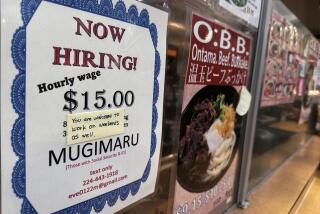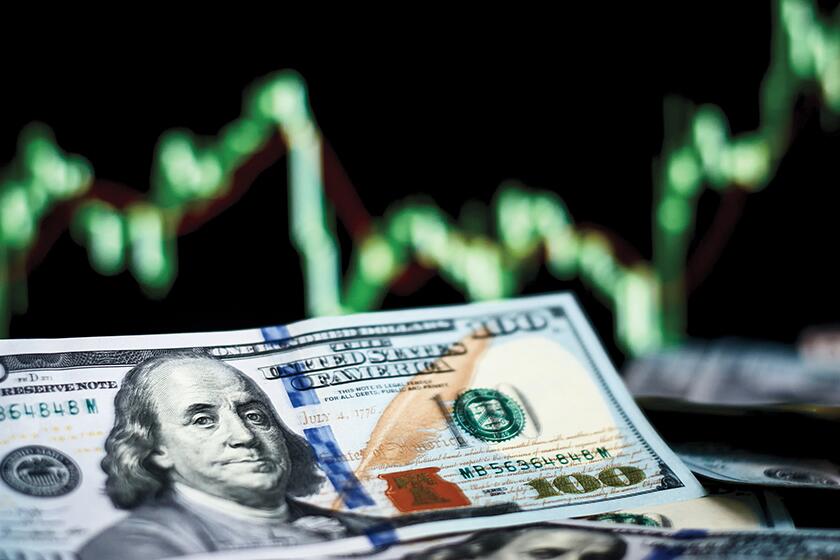July’s job growth strong but below expectations

The labor market extended its best streak since the late 1990s, posting solid job growth last month that lured more people back into the workforce.
The 209,000 net new jobs were below analyst expectations and a sharp falloff from June’s robust 298,000 figure.
In addition, there were signs in Friday’s Labor Department report that the job market still isn’t back to full health. Those markers included stagnant wages and an increase in the already high number of people out of work for more than six months.
Nonetheless, July was the sixth straight month that the economy added more than 200,000 net new jobs, which hadn’t happened since the early dot-com boom in 1997.
President Obama touted that streak, along with a host of positive economic data released this week.
“The good news is the economy clearly is getting stronger, things are getting better, our engines are revving a little bit louder,” he said.
In a sign of the recovery’s progress, analysts said July’s job growth was a bit of a disappointment. A year ago such growth would have been a reason to celebrate. But economic conditions have improved since then.
With revisions that added a total of 15,000 more jobs to May’s and June’s numbers, the economy is averaging about 230,000 new jobs a month this year. That’s up from 194,000 last year.
The unemployment rate rose by a tenth of a percentage point to 6.2% in July. Still, that was down significantly from 7.3% a year earlier.
And the rise was for a good reason: The labor force grew by 329,000 last month as many people who had left the job market — and so weren’t being counted in the unemployment rate — returned. That caused the labor force participation rate to inch up for the first time in five months, to 62.9%, from its lowest level since 1978.
“This is a solid report that shows the economy is moving forward at a fast enough rate to put people back to work,” said Chris Rupkey, chief financial economist at the Bank of Tokyo-Mitsubishi in New York.
July’s jobs report was good enough to maintain economic momentum but not so good that it added to investor concerns that interest rates will rise sooner than expected.
The Dow Jones industrial average dropped 69.93 points, or 0.4%, to 16,493.37 on Friday amid global tensions. It dropped 467 points for the week, the second worst of the year.
Friday’s loss was an improvement after a 317-point sell-off Thursday fueled by worries that recent upbeat economic data would lead the Federal Reserve to act more quickly to raise its near-zero short-term interest rates.
“Wall Street has become more concerned that growth is improving,” said Tim Hopper, chief economist for TIAA-CREF, one of the nation’s largest money managers. The July jobs report eased those concerns, he said.
Hopper doesn’t expect the Fed to start raising rates until late next year.
Some key, good-paying industries accelerated their hiring pace last month.
Construction companies added 22,000 new jobs, more than double the 10,000 added in June. Manufacturers increased their payrolls by 28,000, up from 23,000 in June.
Job growth declined in retail, to 26,700 in July from 41,200 the previous month. Professional and business services added 47,000 net new jobs, down from 73,000 in June. And job creation in the education and health services sector was 17,000 last month, well off June’s 45,000.
Overall, private employers added 198,000 net new jobs and government added 11,000.
The report also highlighted that the labor market still has some weaknesses. The labor force participation rate remained at an historically low level. Long-term unemployment increased by about 202,000 to 3.2 million. And wages are barely increasing.
Average hourly earnings rose just a penny to $24.45 in July and increased only 2% over the previous year. That’s just a little more than inflation.
“Until we see real wage growth, we’re not really seeing the improvement we need to see,” Hopper said.
The solid jobs data added to recent signs that the recovery is back on track after a scare during the winter.
The economy grew at a robust 4% annual rate from April through June, the Commerce Department said this week. Much of that growth came from consumers and businesses catching up on activity lost during the first quarter, when the severe winter battered much of the nation and the economy contracted at a 2.1% annual rate.
Consumer spending rose 0.4% in June, up from 0.3% the previous month, the Commerce Department said Friday. Personal income also increased 0.4% in June, the same pace as in May.
And July was one of the best months in years for motor vehicle sales, automakers said Friday.
“It’s better,” Kevin Logan, chief U.S. economist at HSBC Bank, said of an economy growing at about a 2.5% annual rate. “It could be much better, but at least it’s improving — even if slowly.”
Consumers in July said they were more positive about their current financial situation than at any time since 2007, according to private survey results released Friday. Still, the monthly consumer confidence index from the University of Michigan and Thomson Reuters dropped to 81.8 last month from 82.5 in June.
“The slow and uneven pace of the recovery in jobs and incomes during the past five years has made consumers unwilling to put much stock in favorable economic forecasts until repeatedly confirmed by positive realizations,” said Richard Curtin, the survey’s chief economist.
“What may have been termed a skeptical viewpoint in an earlier era is now regarded as a more practical ‘show-me’ state of mind,” he said.
More to Read
Inside the business of entertainment
The Wide Shot brings you news, analysis and insights on everything from streaming wars to production — and what it all means for the future.
You may occasionally receive promotional content from the Los Angeles Times.











